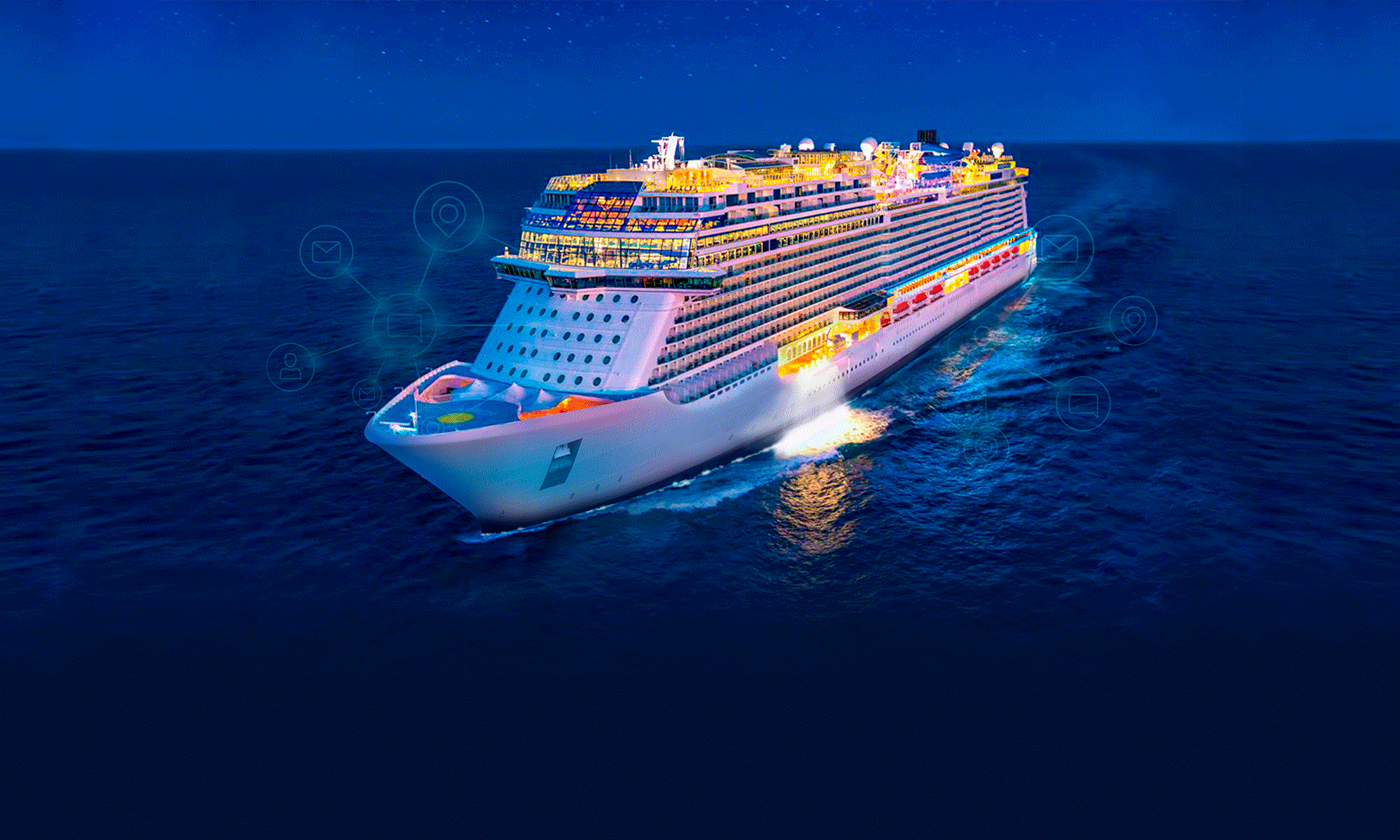High-speed communication is already commonplace in many different sectors opening up incredible opportunities—and particularly so in the world of cruise ships.
Many cargo ships have already moved beyond traditional direct satellite communication to ‘voice over IP’ for communications that run on the data network of the satellite. These Low Earth Orbit (LEO) satellites provide workers on the ships with almost the same communication tools available to office workers, which is a remarkable feat.
The COVID-19 pandemic has pushed through other recent changes. Contactless technology, for example, can allow passengers to speak with a cruise ship’s reception, or other passengers, by using an app on their phone. Elsewhere, electronic health-monitoring devices keep track of vital signs for those who may have to quarantine on a cruise ship.
Let’s dig deeper to find out where these innovations could lead to in the future of maritime communications.
Remote Operations and Assistance
As things stand, there are not many systems available on ships that could reliably run without crew intervention. However, there have been some promising experiments in the last few years which could lead to remote control becoming the norm. At Carnival’s fleet operations center, the team recently conducted a remote trial using bespoke monitoring and analytics systems, which could be extremely helpful in the future should cruise ship staff fall ill or face exceptional circumstances.
In the years leading up to the COVID pandemic, remote monitoring and equipment support were making steady gains in the marine industry, and according to Carnival’s example, it appears that now more operators are eager to engage. The capacity to use 4G/5G technology on a cell phone in ports, along with improved off-shore network capabilities, has undoubtedly helped. Furthermore, technology such as augmented reality could make some headway in the industry. In 2020, Samsung Heavy Industries managed to move a tugboat via a 360-degree view of the ship with the aid of AR.
We are still a long way from a sea of autonomous cruise ships, as they are too complex to be unmanned—almost all emergency gear steering still uses manpower. The development of propulsion technology could allow a less complicated autonomous ship to function, but it is still a huge risk at this point. Communication links between the vessel and shore would need both abundant bandwidth and a completely failsafe system if a connection were to go down.
Safety and Warnings
Under international regulations, all ships have specific equipment to alert authorities in case of an emergency. This system is called the Global Maritime Distress and Safety System (GMDSS). It allows ships to provide position details, enabling search and rescue services to find them as quickly as possible. A 10-year review from the IMO recently concluded that more satellite providers, aside from just Inmarsat, should be available to ships that need alternative safety systems.
Some of these suppliers will soon act as coordinating centers that contact selected personnel immediately when they receive an alert. At least one of these suppliers has developed an app for smartphones that will give all the information to designated staff whenever an alert is made. Regulators are also moving to minimize the environmental impact of ships moving forward. Warnings about emissions and directives on fuel use may dominate communication systems and networks.
For more information about future communication possibilities check out our blog on “Where is satellite communication heading to in the next 10 years”.
